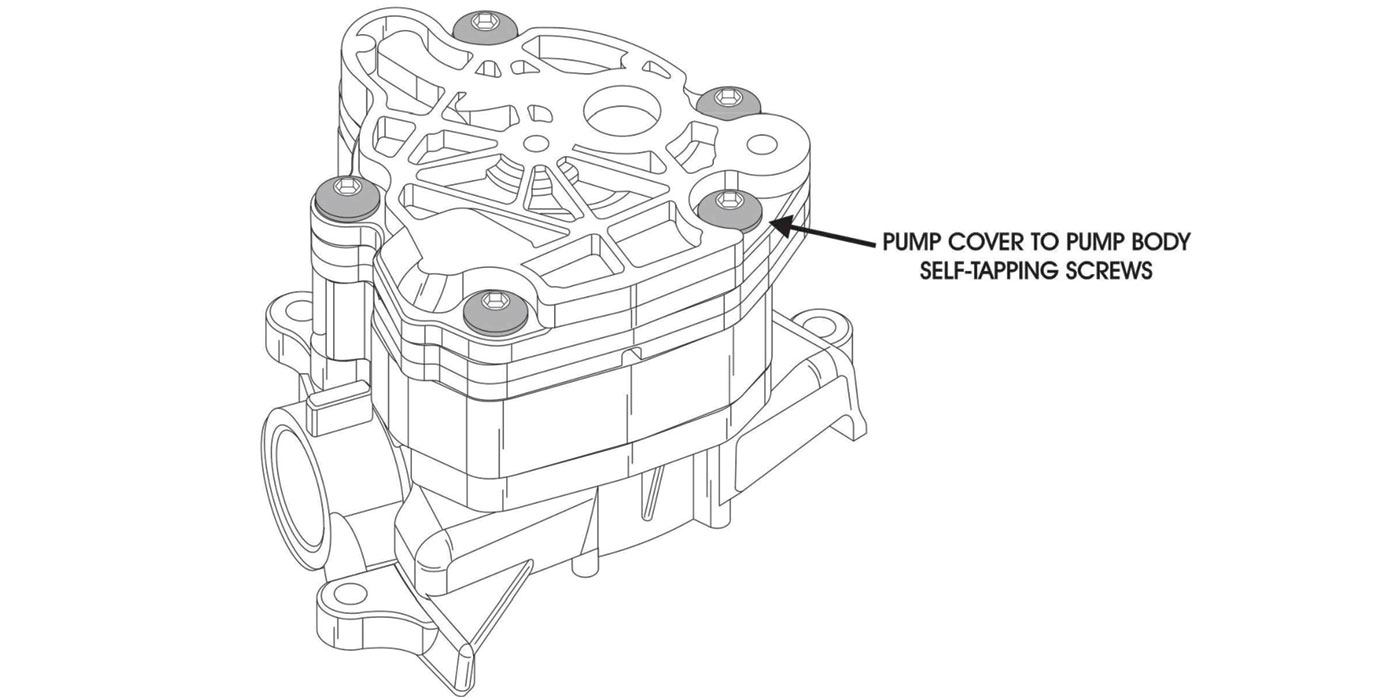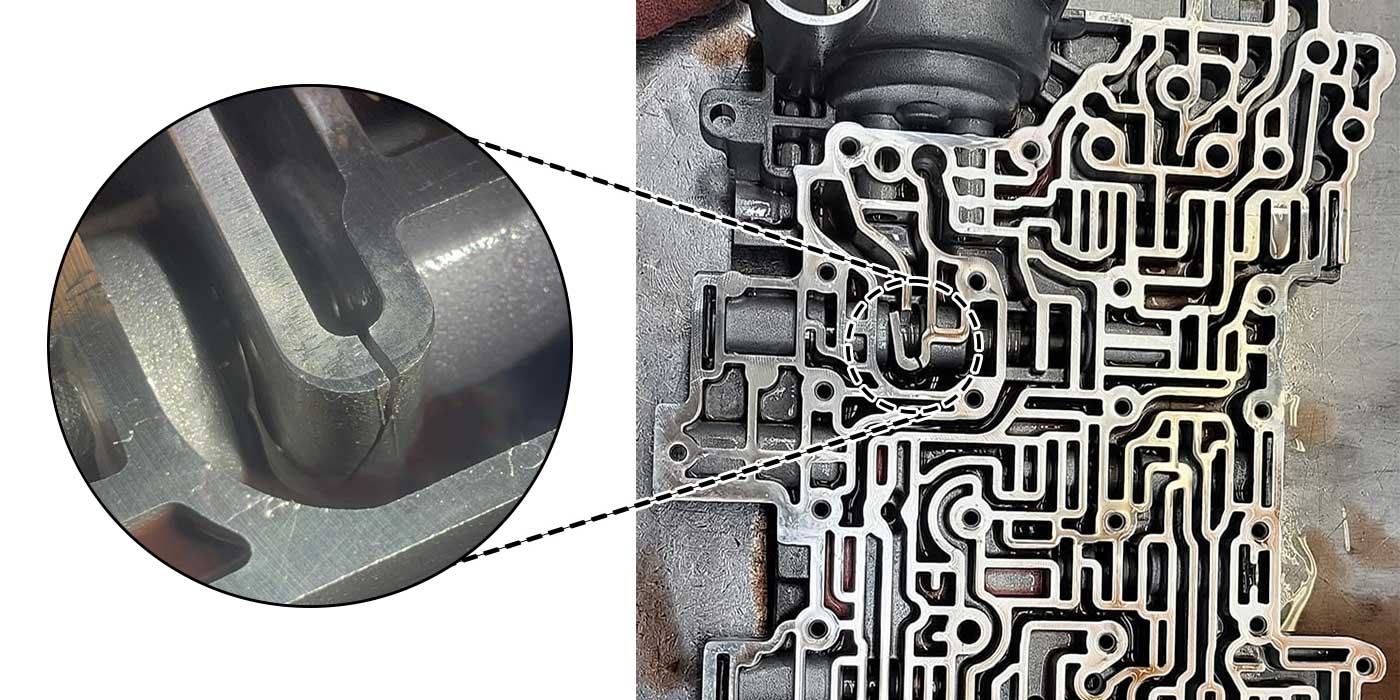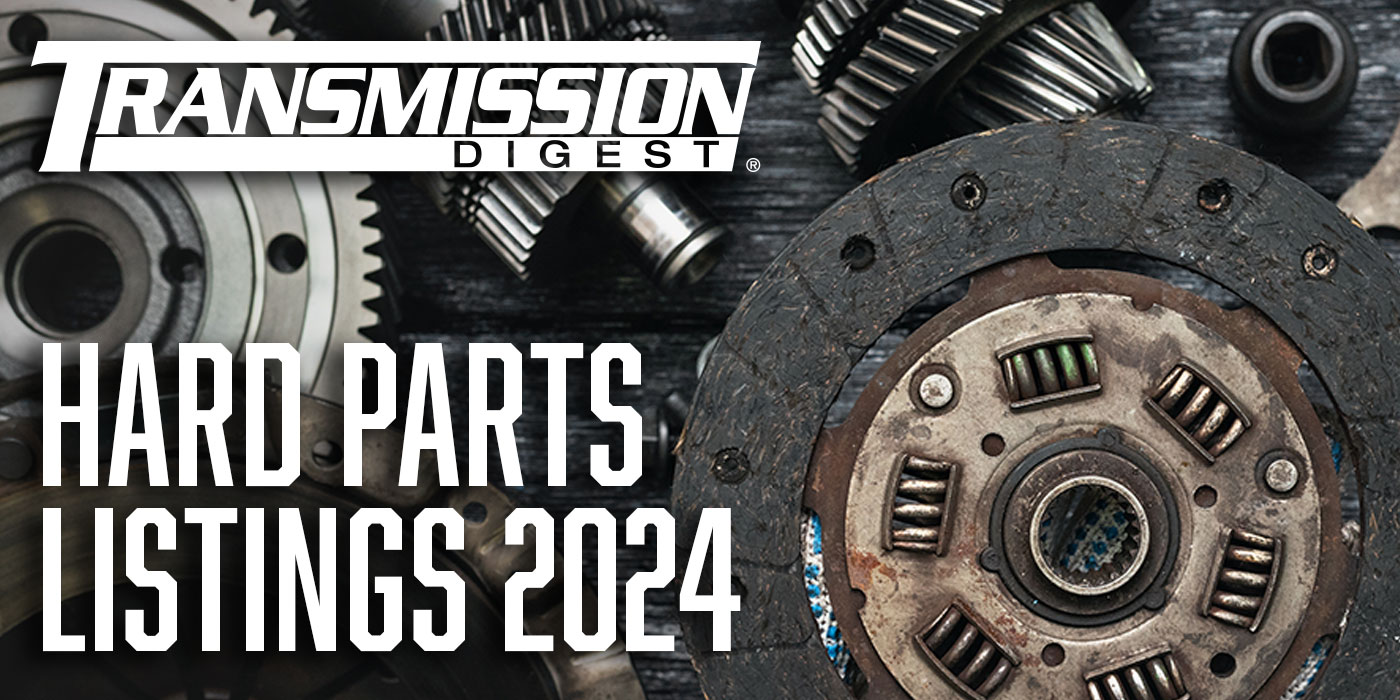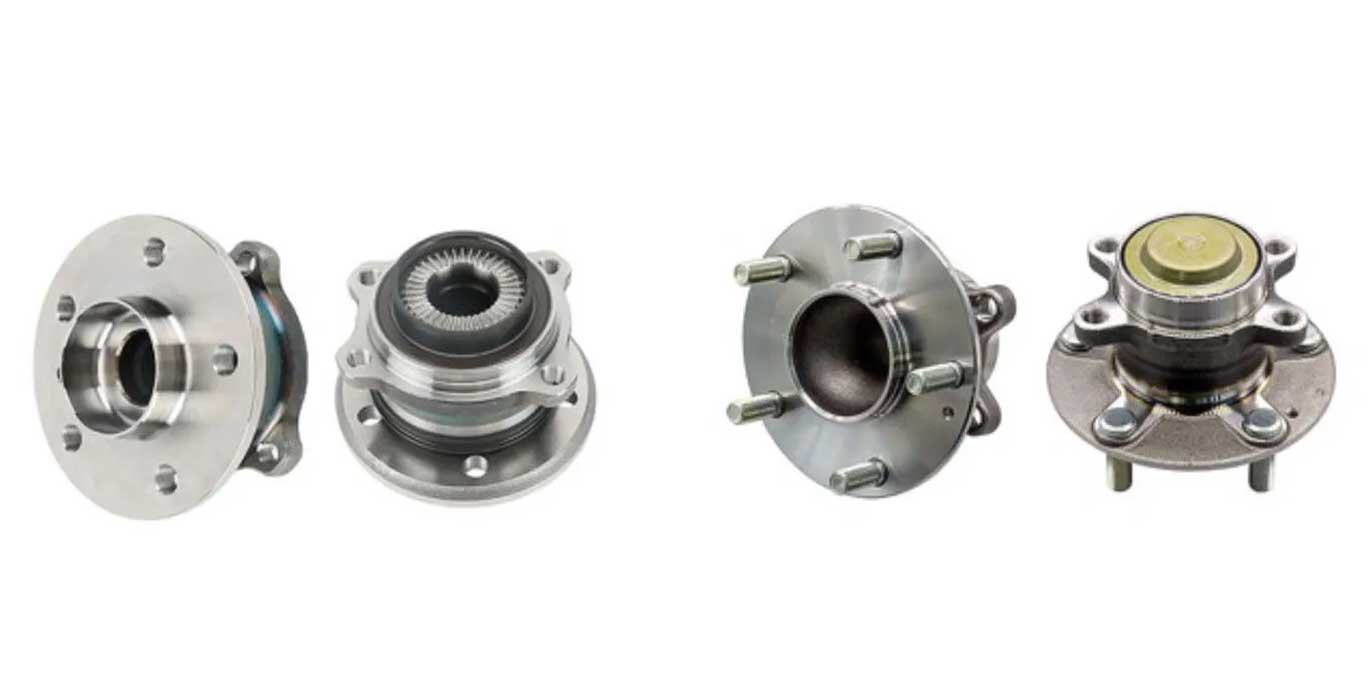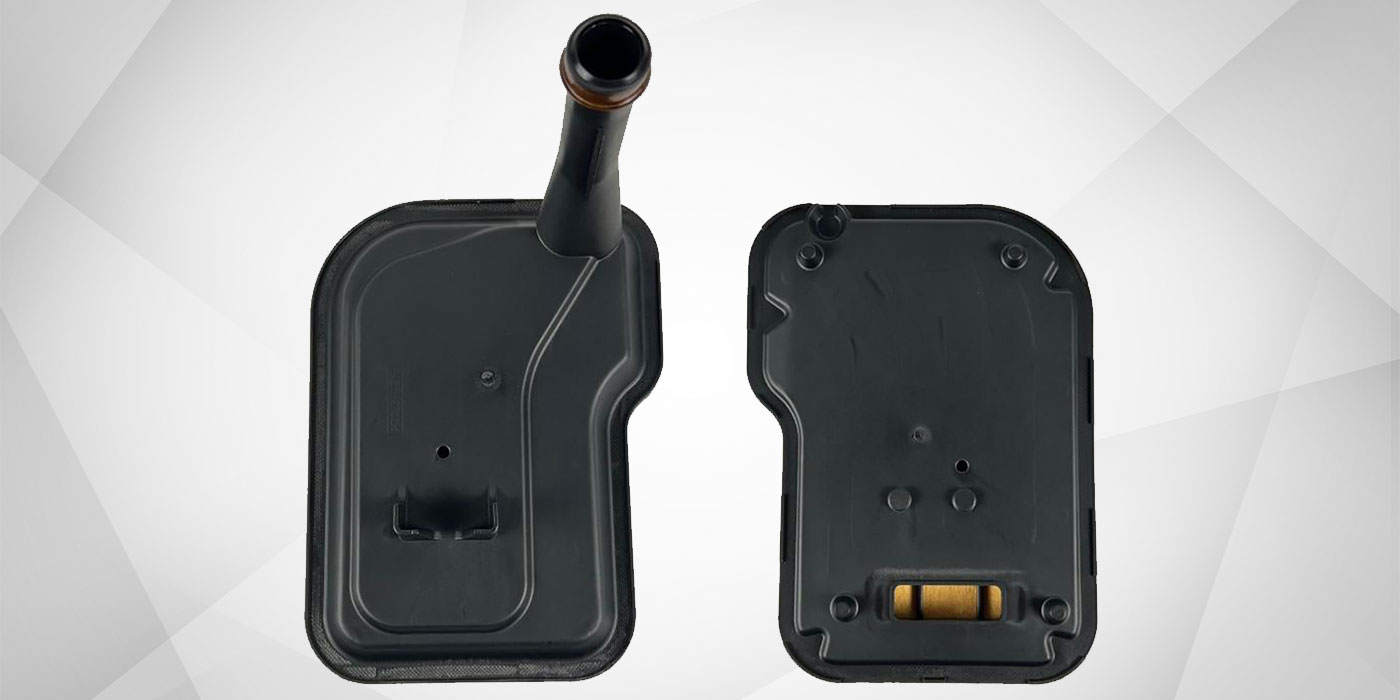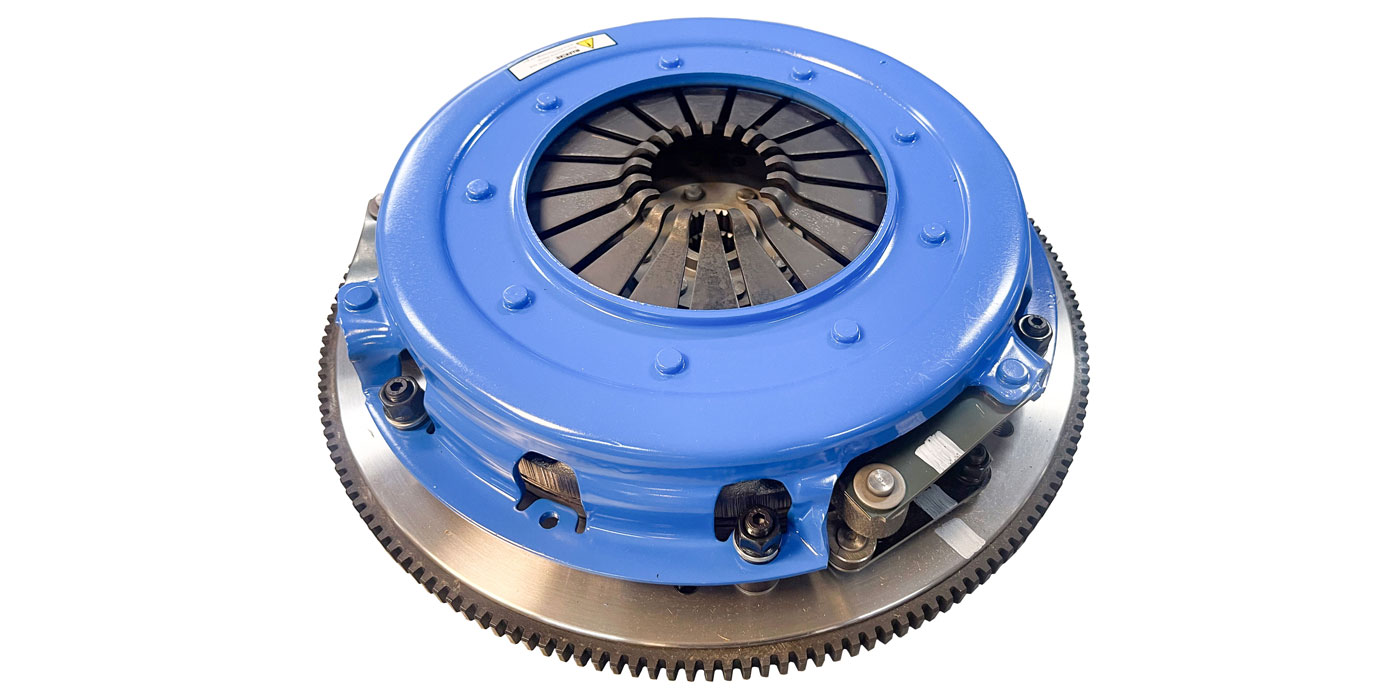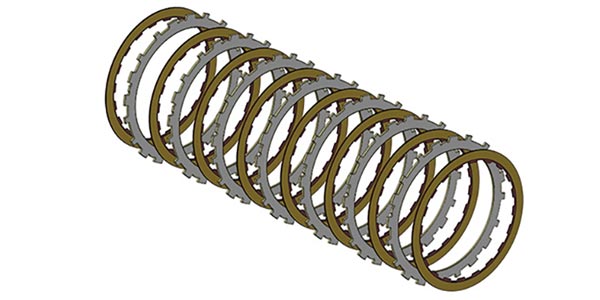It’s no longer a secret… heck, it’s no longer that special for a diesel engine to make 1,000-plus horsepower. It’s become commonplace, and due to that increased capability, it seems that these days, OE manufacturers are rating transmissions at their absolute limits.
As soon as you add a little more horsepower or work your truck harder, the transmission issues begin – converter failures, broken shafts, sprags flipping, the list goes on.
No one with a work truck or a performance truck wants to find themselves in the middle of a transmission problem, so what can you do? Ethan Patterson of WP Developments is one person who can help your transmission stand up to your beefed-up diesel engine, and he gave us a rundown of what his business has been working hard on, as well as ways you can keep your truck’s transmission running well.

“It’s a whole new world in transmissions now,” Patterson says. “Every day, I’ll take some type of a failure and I’ll sit there and study it and try to find out a permanent fix for it. That’s the gist of WP Developments. We test the limits of each part and we design crazy one-off things for the drag racing community, and build and develop on daily drivers. We’re able to strain our stuff at stupid high horsepower to see what it likes and translate that into something for somebody who has 500 horsepower.”
Trucks, and truck owners these days, want that soft shift feel from the factory. However, that’s not always what you want for something that’s going to be a performance truck or a workhorse vehicle.
“Some things we recommend as a workhorse or a little higher horsepower is to get as much pressure as we can to each clutch pack without hurting anything,” Patterson says. “We try to get that clutch pack to apply as fast as possible without jarring your head every time. Each time we slip that clutch into gear, obviously it generates heat and friction, so it is wearing material each time it slides in. We really concentrate on clutch apply time, converter apply time and pulse width modulation of the walkup torque converter.
“When you pulse those things in, it’s going to generate a ton of heat and heat is the death of fluid, lubricity and all of your additive package in your transmission fluid. If you have a really good transmission fluid, it’ll handle a little bit more. In racing applications, they’ll run a full synthetic that can still lose its additive package, but the base oil will never go away. Some of these cheaper oils out there start seeing all that heat and lose lubricity, or the metal mixes in with the oil instead of separates and your filter sometimes doesn’t get all that out, so these micro pieces of metal incorporate into your fluid and start wearing out your valves, and now your valves are leaky and the apply time gets worse.”

The base cause of these issues is lack of maintenance or the lack of filtration. The harder you work your transmission, the more you should probably do a fluid drop and a filter change.
“It’s cheaper than building the transmission,” Patterson points out. “Once you start starving that transmission system with a plugged filter or something, it’s total catastrophic failure. Every clutch gets burnt. Your applied times, from lack of volume, start growing. Then, you generate more heat between shifts. That’s the stuff here at WP Developments that we really concentrate on.”
With transmissions such as the 47 and 48RE, folks like Patterson can do whatever they want in the valve body. They can control main line pressure, lockup, firmness, how fast it comes in, the 1-2 shift timing, the 2-3 shift timing, the 3-4 timing – everything. But, as you get to the newer model vehicles, you really have to be careful who you have inside your programming.

“If they don’t understand the working capabilities of a transmission, all of a sudden you don’t have enough line pressure or the clutch comes in too slow or your lockup is pulse widthing still and making the converter life to go away,” he says. “They’re not hitting lockup fast enough and it’s sitting there riding the fluid coupling out and creating a huge spike in temperature. The transmission builder has to be in sync with the software engineers and tuners in order to get what a transmission really needs.”
As mentioned before, newer trucks are after a really smooth shift. The only way to be able to do that is to slide clutches in and out. However, as soon as you start towing a Bobcat or an excavator or anything like that, and it slides into that gear, it’s multiplying how much heat it’s generating and how much life it’s taking away from the transmission because it’s not a firm, quick, crisp shift.
“That’s the stuff we would change in our valve bodies back in the day,” Patterson says. “We want it to be smooth too. We don’t want your kids in the back spilling their drinks when you make a 1-2 shift. That’s not what we’re after, but we need to make it happen as fast as possible. We need to make lockup happen as fast as possible. We need to make each clutch come in and out seamlessly, but without a slip. That’s really what we’ve been concentrating on.”
The new way of transmissions these days is the clutch-on-clutch transmission, which means having to take a clutch completely off before applying another clutch, so timing is very crucial.
“If you’re using a 4R100 or a Turbo 400, it just stacks a clutch on as you go up in gears, so it never has to take a clutch off and put one on in order to get a next gear,” he says. “It just keeps adding fluid to another piston to engage another clutch – genius design. You don’t ever have to time anything because it’s always coming on or it’s always shutting off.
“When you start getting into these newer 6-speeds, 8-speeds and 10-speeds, they’re even more in depth. Usually, in a transmission, we have a forward clutch which never comes off in any forward gear. That clutch is always on. It’s connected to your input shaft. It’s the strongest clutch in the whole transmission because it has no gear ratio to it. It’s just one-to-one with your engine, and it never strained.
“Now, these newer transmissions are taking their forward clutch off and putting a new clutch on for their overdrive section. Getting that to hold all the power has been very difficult because you’re taking off the strongest clutch in the whole transmission and relying on another clutch that isn’t inside directly, without a bunch of gear ratio, to take over the hardest two or five gears. Halfway through a 10-speed it switches what its forward clutch is to a different clutch all the way in the back. Now all of a sudden, you have deductions and its way more strain than what the forward clutch would be because it’s in a different section.

“Now our overdrive gears aren’t as strong as they used to be because they’ve lost their one clutch attached directly to the input. That was the way of the future and how they got around being able to stack so many gears in a transmission without actually having 10 clutch packs. They were able to split that forward clutch into two different clutches to have five up front and five in the back and they do a different number of clutches with it in order to get their gear ratio they desired. You still only have six clutch packs in the transmission and six solenoids in the transmission for your clutches, but the way they add them together and the gear ratio they’re attached to was able to get 10 different speeds.”
Transmission maintenance
As with anything mechanical under a lot of stress and abuse, proper maintenance is the key to ensuring longevity, so things don’t break. Unfortunately, most people don’t perform this maintenance enough or take their truck to get serviced within the correct intervals, so problems tend to arise.
“We’ve had a couple trucks come in here with 400,000 miles on a factory transmission – a 68RFE – which is known to be the most-failed transmission in the diesel industry,” Patterson says. “The only thing that these two particular 400,000-mile trucks had in common was they followed the Mopar maintenance program. I think they changed them in 20,000-mile intervals, so probably every other oil change they were doing a pan drop with a filter and just replacing the fluid only that comes out of the pan – not doing a complete flush. That’s a big no-no.
“Those two transmissions, we really studied hard. The overdrive clutches look great, which is a big failure point of the 68. The one thing they had in common that failed was the torque converter. The torque converter failed because of pulse width modulation, nothing about worn valves or anything like that because in doing vacuum tests, they were absolutely perfect. What it came down to for both of these trucks was that the owners let the dealership do the maintenance schedules on them and they followed the 20,000-mile interval.”
If you have a transmission that you work hard and you’re shearing the fluid, you’re heat soaking it and you likely have metal in it. As that metal gets incorporated with that fluid, the chances of a failure exponentially increase.
“Just imagine this valve stroking a million times in 1,000 miles,” he says. “This valve is sitting in there stroking with basically cutting fluid on it because it’s an abrasive fluid that’s stuck to this valve you’re lubricating with and it has very fine metal particles inside. The filter can’t catch all of it.
“That fluid is supposed to be lubricating, but instead, it’s wearing the bores out and now your bores have a cross leak, or they’re leaking out the end and causing a volume deficiency, or they’re causing it to apply another clutch that’s not supposed to be on and start dragging it and messing it up, or it’s bypassing your converter valve and allowing it to go in there and drag that converter clutch a little bit as you’re driving down the road. It might be a five or 10-degree increase over time, but it will keep going and going and going and will eventually delaminate your torque converter clutch.”
Maintenance on something that’s highly strained is critical. Follow the proper service intervals and drop the fluid out of the pan, put a filter in it, bolt it back up, and everything will be so much happier.
Now, that recommendation is primarily for daily drivers or workhorse trucks. In the drag racing scene, things are different. In racing, so much heat is generated that most folks use a pit cooler that will actually pull fluid out, filter it and shove it back in the trans. The “service intervals” are actually every pass at that level of competition.

“For somebody with a 1,000-horsepower street truck, the 20,000 miles probably isn’t something they would normally do in a two-year span,” Patterson says. “You just have to use your best judgment in regard to service intervals. However, you should still change it at least once a year. Without your transmission, your engine means nothing. The maintenance needs to be just as important in your transmission as it is in your engine. I think a lot of people don’t take that into consideration until they start having a problem.
“You’ve got to drop the pan, change the filter and change the fluid out. Otherwise, all that material is going through your pump. That can create cavitation in the pump, which can mean lower pressure, less lubricity, and lower volume efficiency, so it is slower applying. That would be because there’s not as much volume in there and it’s creating a deficiency of volume, not pressure. How fast we can get that pressure to get in the circuit and rise is the biggest hurdle that we all strive for.
“The whole goal is to get the fluid in there as fast as we can and clamp that friction to create less heat and less slip factor. If you have a restricted filter, that definitely can be a huge volume deficiency where it’ll still make pressure, it just takes longer for each circuit to get that fluid volume because it can’t suck it through the filter.”
Transmission upgrades
Maintenance work is critical if you want your transmission to live, but the nature of your transmission can and should differ depending on the application, for example, something for a workhorse truck versus a drag racing truck. With a drag racing setup, you’re not as concerned with a firm shift. The firm shift is what you’re after with longevity, but if you go too firm, then you start breaking hard parts. That brings us into billet shafts.
“On drag racing stuff, we don’t want any type of pulse width on converter lockup,” Patterson says. “Now, extreme drag racing, like in the Pro Mod classes that we are part of where they use Turbo 400s, we actually do add pulse width modulation, not to make the transmission last longer, but because it’s so light and so much power that when it hits that sudden jolt of lockup, it will break the tires loose and turn you into the wall. The chassis can’t handle that abrupt lockup, so we actually do slide it in. We take life out of the converter by doing so, but it’s either hit the wall or replace some frictions every season on a lockup clutch.
“When we go into a heavy street truck that’s making a 1,000 to 1,500 horsepower, which seems to be everybody’s new goal, we’ve done some different things in terms of how to apply the clutch and what clutch type we want to use. From clutch-on-clutch, we’ve learned a lot about frictions. We have to find that happy medium of friction type and pressure for this application.
“A drag racing transmission will probably get a more aggressive clutch. If it doesn’t get a more aggressive clutch, we’ll add more clutches to it. When we do that and we make a more firm shift, we have to add billet shafts. That’s where the billet shafts, billet flexplate and triple disc converter comes into play because we are shocking it harder than the factory was, and harder than a 500-horsepower truck, so we have to build the base around it.”
According to Patterson, not only do you need those billet components, but you need a very stout oil pan for extra rigidity due to torsional twist.
“Everybody thinks the deep pan is just for extra fluid capacity,” he says. “In high horsepower and heavy torque applications we see torsional twist, so we need a really thick cast pan. For instance, we girdle the main caps in our engines because of torsional twist. We want to do the same thing with a transmission. The deep pan is used to girdle that transmission to keep it rigid and keep it from flexing and letting fluid come out because then you lose all of your volume and all of your clutch apply pressure.”

Equally as important is a triple-disc converter, which can often be a make or break component in a performance-oriented transmission.
“When we go to that heavy towing or drag race deal, the only thing that really changes in a triple-disc torque converter from daily driving would technically be just in the stator design – different stall rates,” Patterson says. “If we’re towing a trailer, we’ll take something that’s a lower stall value, that way we can get out of the hole faster and not generate as much heat. For drag racing or a high-horsepower set up, we usually have a big turbo on there, so we need to be able to get up in that 2,200-2,500 RPM range to get this turbo to start spooling, so we would add a looser stall rate to a triple-disc torque converter. However, the internals of the torque converter should all be the same.”
Currently, WP Developments has been focused on the 68RFE and making it a more durable option. As such, Patterson has been first to market with a manual valve body 68RFE, which has been out for a few months, and he will be continuing to test and push the trans for further development this summer.
“Having everybody say that it’s a big piece of junk really got me to study the transmission and find out why,” he says. “It has the foundation to do what we want it to do, we just had to get it there. Our manual valve body is still electronically controlled. We can control how firm the shifts feel, but you have to manually shift. It’s a four-speed now, so we got rid of the first gear that was common to break in high-horsepower applications because of the low roller sprag, and we got rid of fifth gear that was paired with the smallest clutch in the system. It goes from second to third to fourth and then makes a sixth gear jump.
“A lot of people are worried about that fourth to sixth gear jump, but it’s very identical to a manual valve body 48. It’s so identical that we were able to put the same shifter that you would use in a full manual valve body 48 with the same buttons, so we have lockup and overdrive. That gear ratio change is within 0.07 of a ratio, so you would never tell a difference if you rode in it.
“We have a 68RFE with a transmission brake in our test truck that we’re going to run in the diesel drag race circuit of the ODSS in the 7.70 class. We’re going to beat the ever-living crap out of this thing and see what we can’t break. If we can’t push the limitations of what we have and find the weak points, we can’t fix it. We’re always trying to push it to the next level of abuse to be able to say, this is the next failure point.”
That’s the diesel industry in a nutshell, and we can’t wait to see what comes next.
This story was originally posted by our sister site, Engine Builder.


